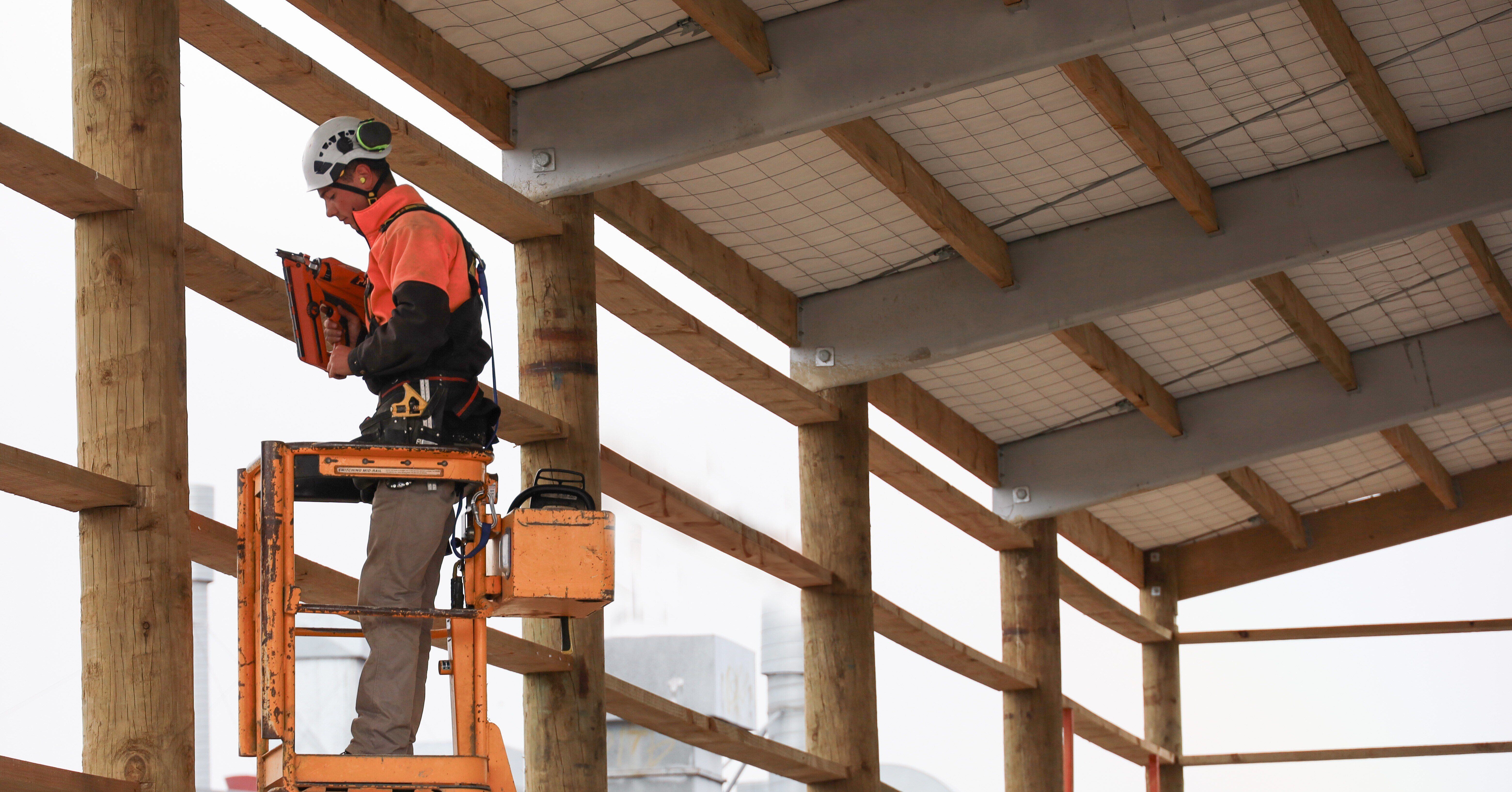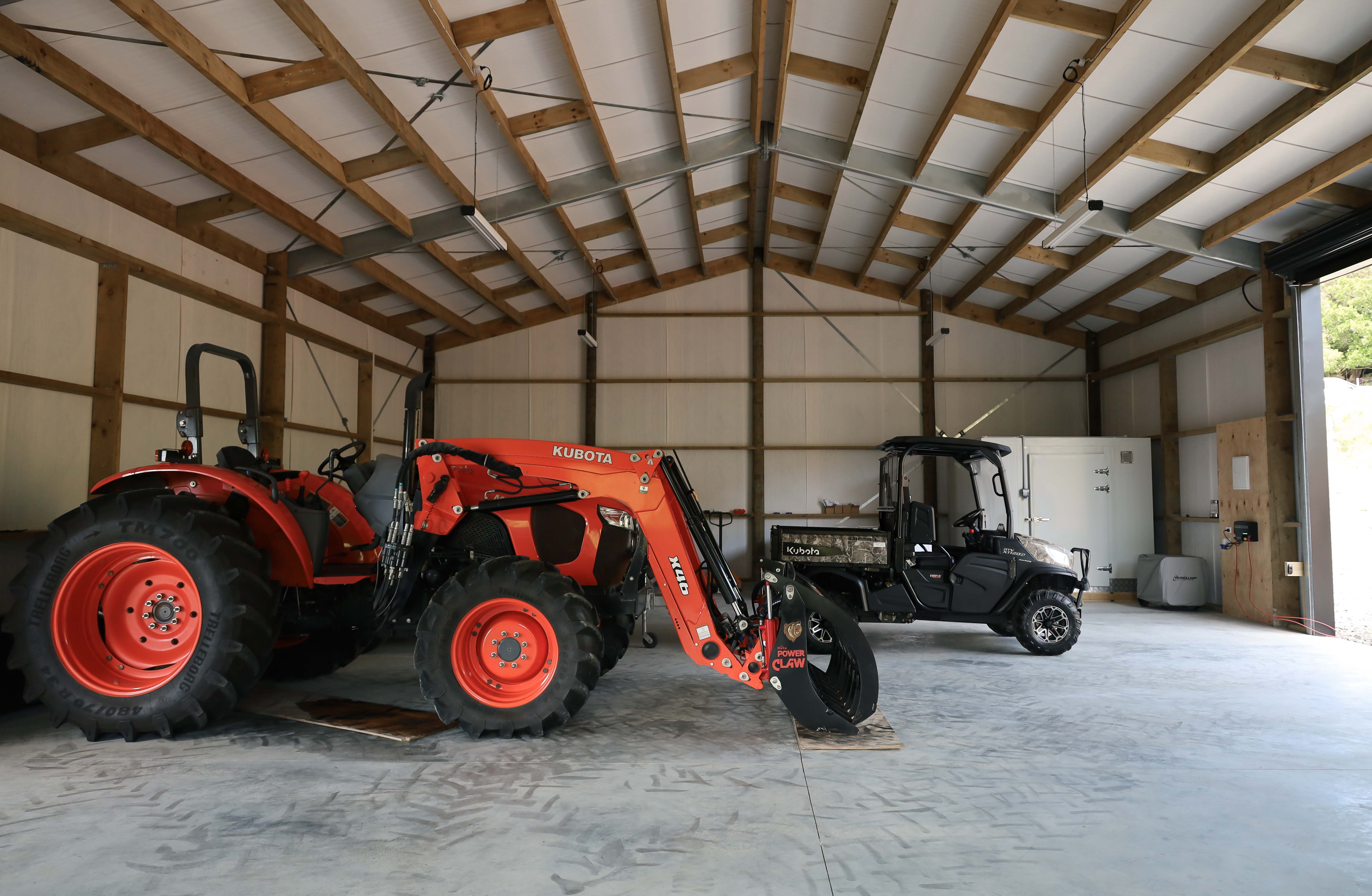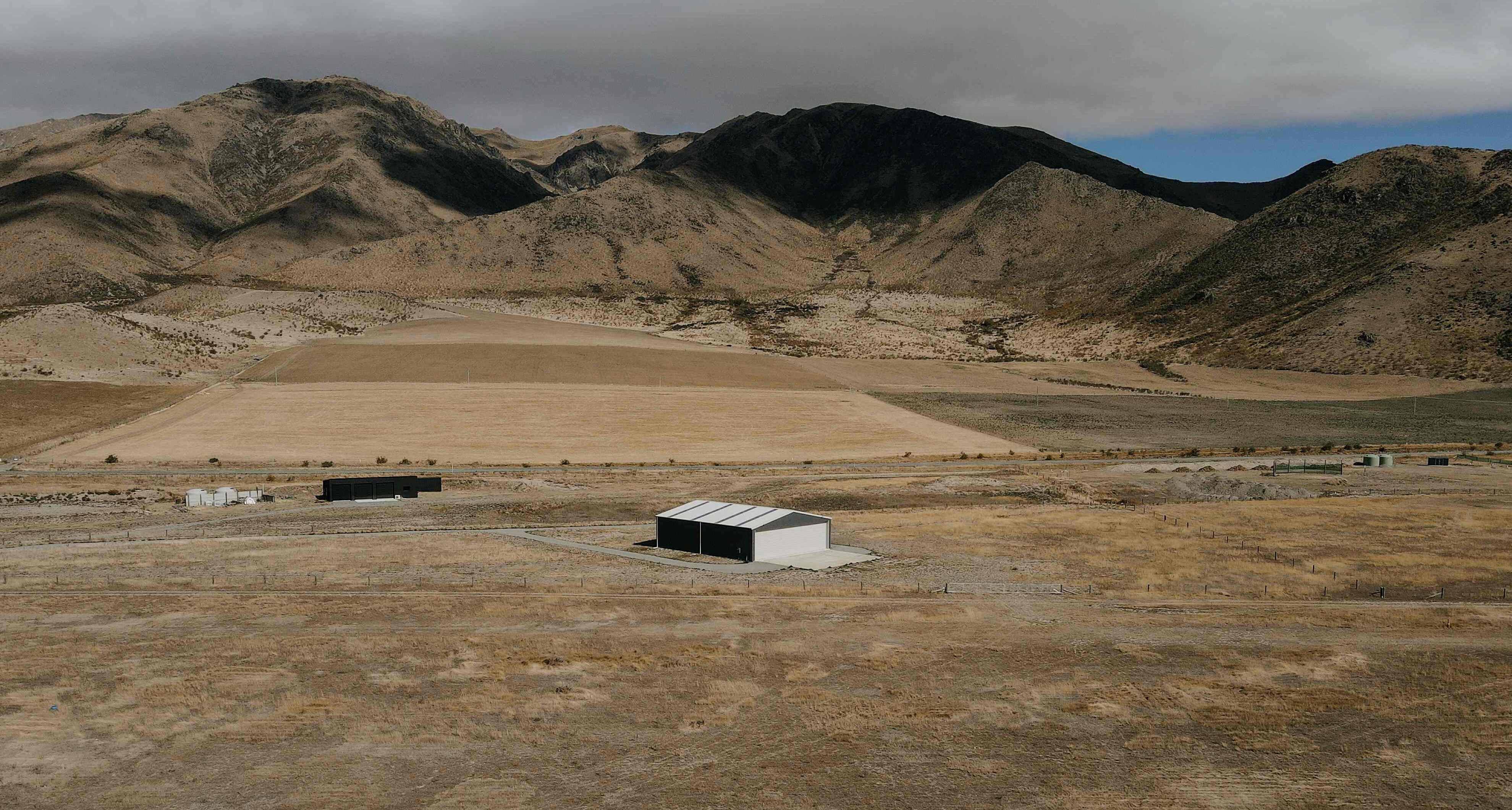
Settling on the right shed construction material for your unique needs is a big decision when starting your build and there are many aspects to take into account.
There’s always been a lot of discussion around the benefits of timber versus steel in particular, where some people love timber and some are steel all the way. While it’s been proven that both are great construction materials, there are a few key differences that are important to explore before making your final decision.
In this article, we dive into the pros and cons of each material to help you decide which is most suitable for you.
Steel sheds
Steel sheds are very common around New Zealand, from small residential garden sheds to large-scale commercial buildings. There are, however, two types of steel construction methods available that achieve quite different outcomes.
The first is cold-rolled steel and the second is structural steel. And while they may look alike from a distance, the two share very few similarities.
What is cold-rolled steel?
Rolled steel is a flat sheet of steel, typically between 2-3mm thick. This flat sheet then gets pushed through a machine with multiple rollers and this bends and folds the steel into a shape. The actual shape of the profile varies between manufacturers and will depend on what the steel portal will be used for; however, no matter the shape, all portals made of this steel will share the same characteristics.
The pros of Rolled Steel
- Lightweight
As the steel is only 2-3mm thick and the portals are hollow, it is relatively lightweight compared to other construction methods. This means that less heavy-lifting machinery is required during the construction of the building, and this can lead to some cost savings such as the hiring of hi-abs, cranes, telehandlers etc. - Bracing
Since these designs often require knee braces and apex braces, they tend to be quite rigid structures. This means that these sheds lend themselves to habitable dwellings like sleepouts as they can be designed to meet the Importance Level 2 building code required for habitable dwellings. - Cost
As there is a relatively small amount of steel in the entire structure due to the thin sheet metal, these designs are typically quite cheap compared with other construction methods.
The cons of rolled steel
- Durability
While the lightweight nature of rolled steel can be beneficial in some areas, it also has its drawbacks. One of the main cons of this system is its overall durability. The entire structure relies on the shape of the profile for strength rather than the strength of the steel itself.
The thin steel is damaged quite easily and can even be dented with something as basic as a hammer. If a structural portal is hit with any force, the shape of the profile will be altered, and the strength will be compromised resulting in a potentially major structural flaw.
Some other designs will last significantly longer. In some cases, these systems can last twice as long as roll-formed steel. While there are some exceptions to the rule, this means that a roll-form steel shed will typically only be consented to for 25 years. - Rust
Rust is another problem with rolled steel buildings. While rolled steel does have rust protection in the form of electro-plating, this coating is very thin and does not last very long, especially in coastal environments.
The other thing to bear in mind is that this type of construction typically relies on thousands of tec screws for all connections. This means that every time a tec screw is screwed through the steel, the electro-plating is removed from around the screw due to the heat created by the friction. This leaves raw, unprotected 2-3mm thick steel out in the elements, and rust forms quickly.
The best form of rust protection is hot dip galvanizing as this is a process that not only pickles (cures) the steel but also leaves a coating on every surface about three times thicker than electro-plating. The hot dip galvanizing process cannot be used on rolled steel, as the thin 2-3mm thick steel cannot withstand the intense heat of the galvanizing baths. - Bird proofing
While there are some roll-form designs that are exceptions to the rule, the vast majority rely on apex braces and knee braces to meet bracing requirements and cheaper C-section purlins are often used to keep costs down.
This combination of apex braces, knee braces, and C-section purlins results in many areas where birds can perch and roost in the roof structure. This means that anything inside the shed quickly gets covered in bird droppings, resulting in damage to equipment and an unhygienic working environment. - Noise
Internal noise amplification is another area that is easily overlooked until after construction is completed. As all roll-form steel members are hollow, they amplify sound from bad weather and machinery inside the shed. Steel doesn’t absorb sound frequencies so steel sheds are typically very noisy. If your shed is just for storage, this won’t be so much of a problem. However, if you are building a workshop or man cave, this is certainly one area to consider carefully.
What is Structural Steel?
Structural steel is commonly used throughout the construction industry and is typically 5-10mm thick. It can however exceed 30mm thick in some cases. This steel is extremely strong and unlike rolled steel, it does not solely rely on its shape for strength.
The pros of structural steel
- Durability
When it comes to durability and longevity, structural steel reigns supreme. This steel won’t bend or buckle like rolled steel when knocked and this results in a much more durable structure. This steel can be welded and also uses heavy bolts for all the connections for added strength. - Rust
Since this steel is so thick, it can be hot dip galvanized which is one of the most durable rust protection coatings available. This is a process that uses a brine to cure the core of the steel and then gets a coating of molten zinc. Roll-form steel cannot handle the heat of the molten zinc and it buckles and loses strength. However, this will not happen with structural steel. - Design flexibility
Structural steel comes into its own in buildings with large spans. Structural steel can achieve clearspans of over 40m. Gantry cranes can also be engineered into the shell of the shed if required so this system comes with minimal design constraints.
The cons of structural steel
- Cost
Structural steel is more costly than roll-form steel due to the thickness of the steel. Steel is one of the more costly structural building materials available and a building made entirely out of structural steel uses a lot of lineal meters. - Weight
Structural steel is very heavy compared to other materials. This not only has to be factored into the freighting of this product, but it also adds cost to the construction phase.
Heavy lifting equipment is required to lift the steel portals into place and in some cases, large cranes will need to be hired. This can push construction costs up considerably.
Timber Sheds
Timber sheds are very common throughout New Zealand, and they provide an excellent, cost-effective, and durable option. Most timber sheds consist of timber poles and rough-sawn timber framing.
The pros of timber sheds
- Durability
Timber sheds are very durable and with modern-day timber treatments, will last a very long time. The timber poles typically range from 175mm–300mm in small end diameter and can take the knocks if they are hit with an implement or vehicle. As timber is so strong, it can be designed to withstand very high wind and snow loadings. - Noise
Timber absorbs sound so they are typically a lot quieter than steel sheds. Bad weather and the use of tools and machinery won’t echo around the shed nearly as much as an all-steel structure which results in a more comfortable working environment. - Birdproof
Most timber designs don’t require apex braces or knee braces. Most designs run the purlins between the rafters, giving birds no perch areas to roost in the roof structure. This means that the shed is a lot more hygienic, and anything stored inside the shed is clear of any bird droppings.
The cons of timber
- Wet timber
Some companies use wet timber for all framing. This can be an issue as wet timber shrinks and warps as it dries. While it doesn’t usually result in structural deficiencies, it can look untidy. - Limited clearspans
If you use an all-timber system with timber beams, the maximum distance you can span is quite limited. Standard timber beams can achieve a maximum clearspan of 6.0m.
You can use laminated timber beams (LVL beams) and these can span out to 10.0m however it is dependent on snow loadings in your area. The larger the clearspan with timber, the greater the risk of the timber beams sagging. This can lead to an untidy finish or worse, a shed with structural deficiencies. - Bracing
Timber pole sheds are not best suited to Importance Level Two habitable dwellings as it can be difficult to meet the bracing requirements for a habitable structure. Pole sheds are best suited to agricultural or lifestyle workshops and storage sheds.
The Alpine System
We have now determined that out of the three systems, structural steel and timber are the strongest and most durable materials to use when building a shed. The question now is what is different about the Alpine Building system?
Alpine uses a unique combination of structural steel rafters and timber poles and framing; this means that maximum durability and larger clearspans up to 20.0m can be achieved while maintaining the cost-effectiveness of timber. The durability of this system also means that the Alpine designs come with a 50-year building consent. Typically a roll-form steel shed will only come consented for 25 years.
The Alpine rafters feature a birdproof design. The purlins sit between the rafters leaving nowhere for birds to perch or nest in the roof area. This helps to maintain a sanitary and hygienic working environment inside the shed while protecting any equipment stored inside. The design of the Alpine steel rafters also leads to faster build times, as outlined in our j-cleats vs joist hangers article.
Alpine stocks all the poles and timber for framing in-house, and strict quality control checks are carried out at three points. Firstly, the packs of wet timber are strip-stacked. This means that every board is re-stacked with a bearer between each layer. This allows the timber to air dry evenly over the course of several weeks. While the restacking is taking place, any timber of substandard quality is set aside and discarded.
After several weeks, the timber is fully dry, and the timber can be re-stacked into dry packs. While this happens, any boards that no longer meet the quality standards are once again set aside.
Finally, when the dispatch team are packing up your kitset, each board is checked for a third time. This process results in only the straightest, driest, best quality timber being sent out the gate and this attention to detail is very clearly evident in the final product. Since all of the timber is already dried, it cannot shrink any further. This means that gaps do not form in the joins and results in a very tidy finish.
The combination of these factors means that you receive a quality, clearspan, birdproof, durable asset that provides a long-term return on your investment while providing a quiet, comfortable and hygienic environment to work in.
Ultimately, deciding on the right shed for your unique needs is no minor task so it’s vital you have the information you need to decide what is right for you. If you’re interested in discovering more about our unique blend of timber and steel shed construction, contact our team today to discuss in more detail.

.jpg?width=584&height=329&name=Media%20(1).jpg)










